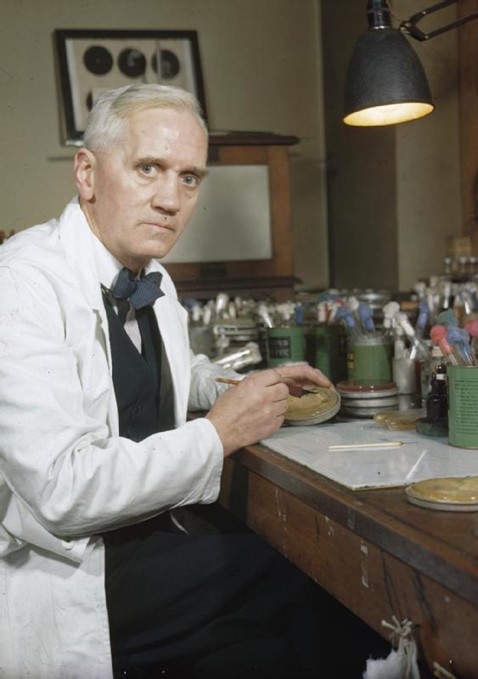5. Example - Antibiotics
Antibiotics (also known as antibacterial) are used to treat or prevent disease caused by bacteria or certain parasites, such as infections of the lungs or the skin. They kill bacteria or prevent them from multiplying by targeting their growth and reproduction. Alexander Fleming (1881-1955) discovered the first modern-day antibiotic in 1928 when he noticed that a mould had killed some bacteria that he was growing in his laboratory. The active ingredient of the mould that Fleming discovered, penicillin, was isolated and quickly became apparent that the naturally occurring form of the molecule had a narrow range of action, and was rapidly broken down by bacterial enzymes. It has, since then, been modified to improve its stability and efficacy for use as an antibiotic medicine. Using a semi-synthetic approach, the chemical structure of natural penicillin was modified. The introduction of penicillin and other antibiotics in the 1930s and 1940s was one of the most important breakthroughs in medicine.
Today, doctors have access to hundreds of different antibiotics, such as ampicillin, amoxicillin, erythromycin and tetracycline, which can be taken using a number of methods, such as orally as tablets, applied externally as topical creams or eye drops, or injected directly into muscles or veins.

Figure 3.1. Alexander Fleming (https://en.wikipedia.org/wiki/Alexander_Fleming)
It is essential to take the complete prescribed course of antibiotics. Bacteria can become resistant to certain antibiotics, particularly if they are exposed to a low dose. They do this so quickly that there is a constant need for research to keep side by side of the changes occurring. A well-known example of this is MRSA (methicillin-resistant Staphylococcus aureus), a species of bacteria that has acquired resistance to a wide range of different antibiotics. MRSA infections are very difficult to treat and can be life-threatening. Antibiotics – which kill living bacteria – are ineffective against viral infections (such as influenza or ‘flu’). To read more about this issue see IMI New Drugs for Bad Bugs ND4BB (http://www.imi.europa.eu/content/nd4bb).
Importantly, some people are allergic to penicillin and similar antibiotics, and in rare cases allergic reactions can be severe, and even result in death.